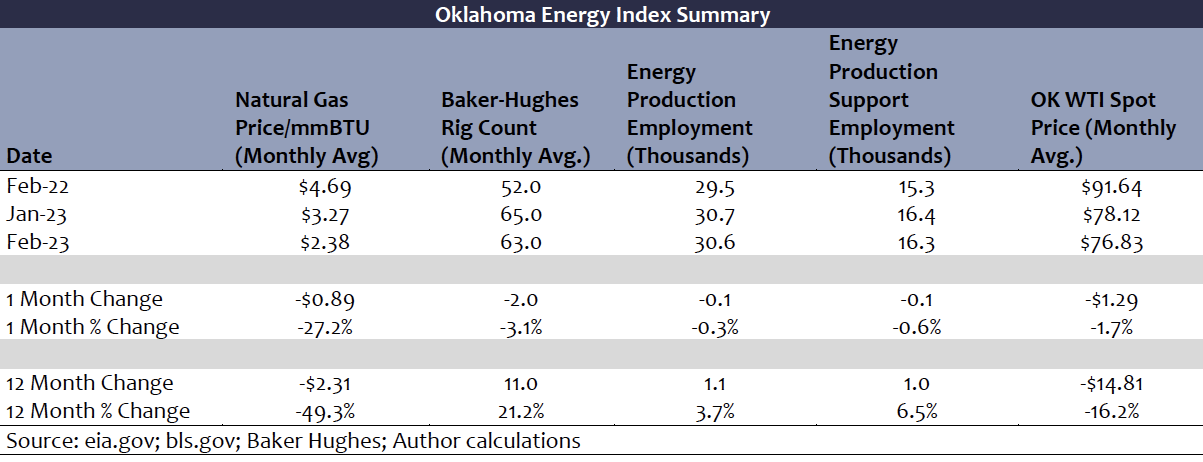Oklahoma Energy Index suggests increased activity in years ahead
[av_post_meta av_uid=’av-8xupd’]

Significant declines in natural gas prices and the downward trajectory of crude oil prices have taken their toll on Oklahoma’s oil and natural gas industry, but increased industry activity is on the horizon.
The most recent Oklahoma Energy Index (OEI) shows a 49.3% decline in natural gas prices from one year ago and a 16.2% drop in crude oil prices in the same time frame, and the economic uncertainty created by those falling commodity prices has stalled Oklahoma’s oil and natural gas industry expansion that began in late 2020.
The index of oil and natural gas activity in Oklahoma declined 2.5% in February following a 5.4% decline in January. The index remains slightly higher — 0.3% — than year-ago levels. The current Energy Index stands at 117.6.
“Oklahoma was on the front lines of the shale revolution and enjoyed tremendous economic support from the energy sector,” said Dr. Russell Evans, who compiles the OEI. “Over the last ten years momentum has slowly faded as each successive cycle struggles to reach the peak activity of the previous expansion. Current levels of activity, however, do not represent a peak and will not set a ceiling on future activity.”
Evans said declining industry activity coincides with conflicting macroeconomic signals on inflation, the impact of proposed government policies, and current financial conditions. However, while some economic weakness is still ahead of the industry, declining U.S. oil and natural gas production and increasing export demand will move prices higher and stabilize activity in the sector in the latter half of the year.
Underinvestment in traditional oil and gas exploration and production, increased demand for LNG exports, and rising costs of production in the Permian Basin signal supply and demand conditions that will move prices higher and more activity into Oklahoma in the months and years ahead, Evans said.
Petroleum Alliance President Brook A. Simmons said Oklahomans are no strangers to the ups and downs of commodity markets. Oklahoma’s economy is built on natural resources, and the producers of those resources have no say in what those products bring at market – just like farmers and ranchers who sell wheat and cattle at market prices.
“Oklahoma’s oil and natural gas industry has proven itself as resilient in the past, and I am confident 2023 will provide better days for the industry, for the men and women who make their livelihood in the state’s historic oilfields, and for the state as a whole,” Simmons said.
The OEI is a comprehensive measure of the state’s oil and natural gas economy established to track industry growth rates and cycles in one of the country’s most active energy-producing states. The OEI is a joint project of The Petroleum Alliance of Oklahoma and Thorberg Collectorate.






